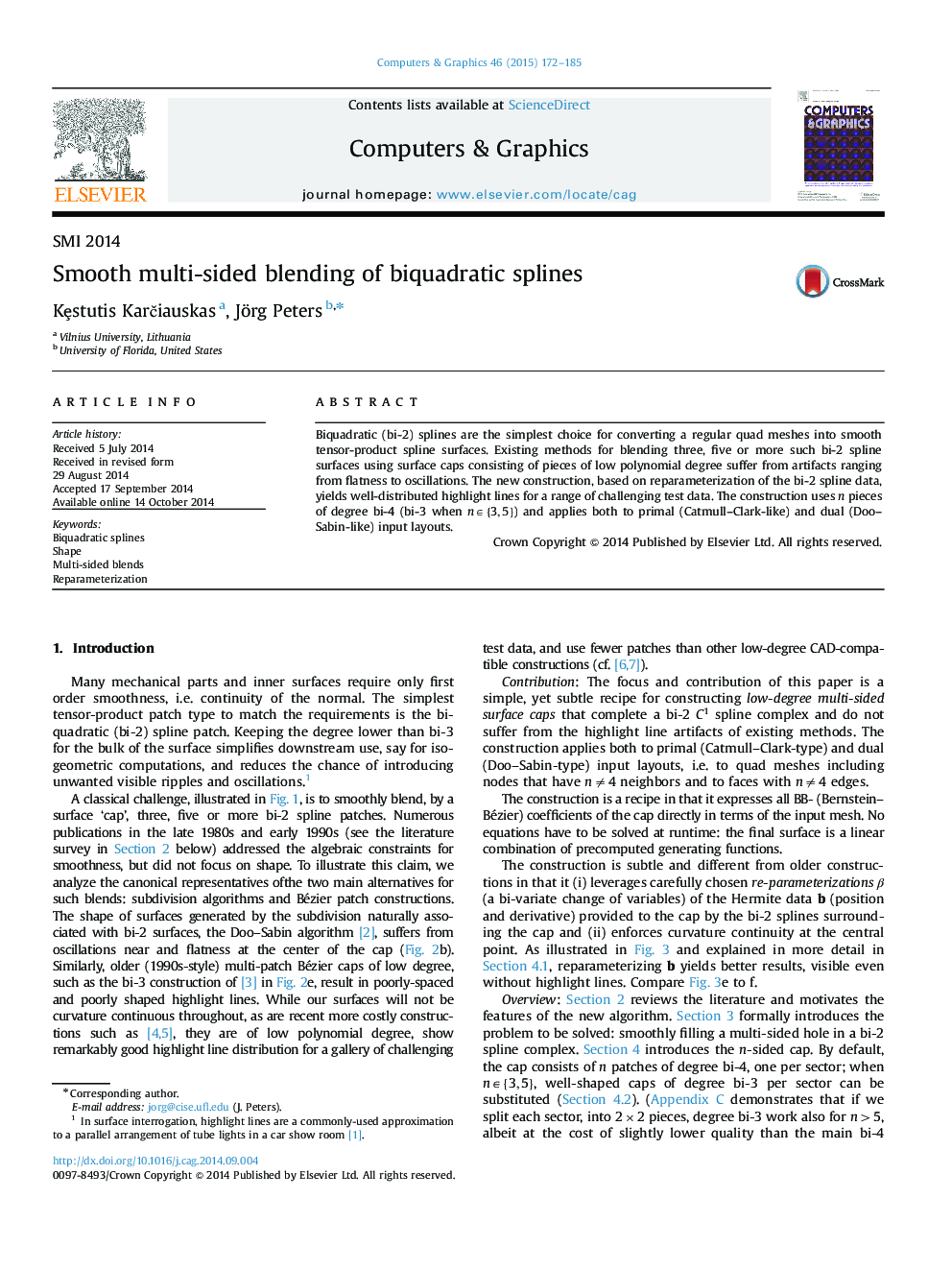| Article ID | Journal | Published Year | Pages | File Type |
|---|---|---|---|---|
| 442573 | Computers & Graphics | 2015 | 14 Pages |
•A quad mesh is converted into a smooth tensor-product spline surface.•Multi-sided holes between bi-quadratic spline surfaces are filled by pieces of low polynomial degree.•The resulting surfaces have well-distributed highlight lines for a range of challenging test data.•The input spline data are reparameterized.•The construction applies both to primal (Catmull–Clark-like) and dual (Doo–Sabin-like) input layouts.
Biquadratic (bi-2) splines are the simplest choice for converting a regular quad meshes into smooth tensor-product spline surfaces. Existing methods for blending three, five or more such bi-2 spline surfaces using surface caps consisting of pieces of low polynomial degree suffer from artifacts ranging from flatness to oscillations. The new construction, based on reparameterization of the bi-2 spline data, yields well-distributed highlight lines for a range of challenging test data. The construction uses n pieces of degree bi-4 (bi-3 when n∈{3,5}n∈{3,5}) and applies both to primal (Catmull–Clark-like) and dual (Doo–Sabin-like) input layouts.
Graphical abstractFigure optionsDownload full-size imageDownload high-quality image (124 K)Download as PowerPoint slide
